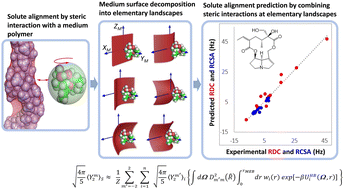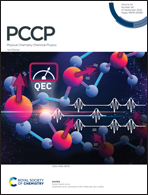Prediction of anisotropic NMR data without knowledge of alignment medium structure by surface decomposition†
Abstract
Prediction of anisotropic NMR data directly from solute-medium interaction is of significant theoretical and practical interest, particularly for structure elucidation, configurational analysis and conformational studies of complex organic molecules and natural products. Current prediction methods require an explicit structural model of the alignment medium: a requirement either impossible or impractical on a scale necessary for small organic molecules. Here we formulate a comprehensive mathematical framework for a parametrization protocol that deconvolutes an arbitrary surface of the medium into several simple local landscapes that are distributed over the medium's surface by specific orientational order parameters. The shapes and order parameters of these local landscapes are determined via fitting that maximizes the congruence between experimentally determined anisotropic NMR measurables and their predicted counterparts, thus avoiding the need for an a priori knowledge of the global medium morphology. This method achieves substantial improvements in the accuracy of predicted anisotropic NMR values compared to current methods, as demonstrated herein with sixteen natural products. Furthermore, because this formalism extracts structural commonalities of the medium by combining anisotropic NMR data from different compounds, its robustness and accuracy are expected to improve as more experimental data become available for further re-optimization of fitting parameters.

- This article is part of the themed collection: 2022 PCCP HOT Articles


 Please wait while we load your content...
Please wait while we load your content...